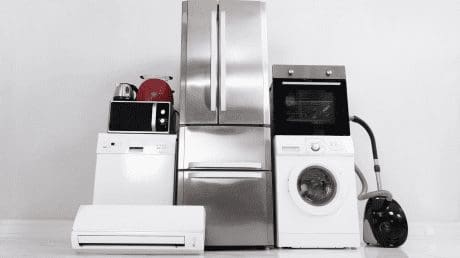
New Rules on Phones and Tablets Enable Sustainable Choices by Consumers

The EU Commission is proposing new rules to help consumers make informed and sustainable choices when purchasing mobile and cordless phones, and tablets, under the existing EU Energy Labeling Regulation.
This new proposal comes on the same day as the approval of measures to make these devices more energy efficient, durable and easier to repair by the European Parliament and Council, following a Commission proposal in November 2022, under the EU Ecodesign Regulation.
These measures help to make the EU’s economy more circular, save energy, cut our carbon footprint, support circular business models and deliver the benefits of the European Green Deal for consumers.
Mobile phones and tablets produced according to these rules will save almost 14 terawatt hours in primary energy each year by 2030. This is one third of the primary energy consumption of these products today. The new rules will also help to optimize the use of critical raw materials and facilitate their recycling.
New Rules
Under the proposed Energy Labeling Regulation, smartphones and tablets put on the EU market will have to display information on their energy efficiency, battery longevity, protection from dust and water, and resistance to accidental drops.
This is also the first time that a product placed on the EU market will be required to display a reparability score. This will help EU consumers make more informed and sustainable purchasing choices and encourage sustainable consumption.
The new products will use the existing and well-known A-G scale EU energy labels, and the EU-wide database European Product Registry for Energy Labels (EPREL) will provide additional information about the product.
Moreover, the newly approved Ecodesign Regulation lays out minimum requirements for mobile and cordless phones and tablets being placed on the EU market, including:
- Resistance to accidental drops or scratches, protection from dust and water and use of sufficiently durable batteries. Batteries should withstand at least 800 cycles of charge and discharge while retaining at least 80% of their initial capacity.
- Rules on disassembly and repair, including obligations for producers to make critical spare parts available to repairers within 5-10 working days, and until 7 years after the end of sales of the product model on the EU market.
- Availability of operating system upgrades for longer periods: for at least 5 years after the product has been placed on the market.
- Non-discriminatory access for professional repairers to any software or firmware needed for the replacement.
Next Steps
These Energy Labeling rules will now be submitted to the European Parliament and Council for a two-month scrutiny period, after which they will be formally adopted if there is no objection to the text by the co-legislators.
To align the entry into force of these two pieces of legislation concerning the same category of products, their publication in the Official Journal will occur on the same day, after the energy labeling rules are adopted. After their entry into force, the proposals both foresee a 21-month transition period before the requirements become applicable.
Background
The Circular Economy Action Plan 2020 aims to ensure that products become more durable, reparable, and easier to upgrade. Specifically, the Circular Electronics Initiative foresees regulatory measures under the Ecodesign Directive for electronics and ICT such as mobile phones, tablets and laptops so that such devices are designed for energy efficiency and durability, reparability, upgradability, maintenance, reuse and recycling.
Ecodesign and Energy Labeling policies help businesses, citizens and governments to contribute to the clean energy transition, deliver on the EU’s energy efficiency targets, reduce greenhouse gas emissions and support the circular economy.
They create business opportunities and increase resilience by setting harmonized rules for energy-related products. These include, in particular, middle-sized and big-sized domestic appliances such as washing machines and refrigerators, and business-to-business products such as enterprise servers and ventilation units, and cover aspects such as energy consumption, water consumption, GHG emission levels and material efficiency.
These measures also foster demand and supply of more sustainable products whilst reducing end user costs significantly; estimates indicate that consumers saved over €63 billion in 2020 thanks to these policies.
More Information
- Commission Regulation laying down ecodesign requirements for smartphones, mobile phones other than smartphones, cordless phones and slate tablets
- Commission Delegated Regulation on the energy labeling of smartphones and slate tablets
- Ecodesign Directive
- Energy Labeling Regulation
- Circular Economy Action Plan 2020
- Ecodesign working plan
- European Product Registry for Energy Labelling (EPREL)
Author

Michelle Walsh, Senior Regulatory Compliance Specialist, Compliance & Risks
Michelle is a Senior Regulatory Compliance Specialist working at Compliance & Risks since 2008. She specializes in monitoring, reviewing, summarising, analysing and assessing global regulations across the areas of energy efficiency, eco-design, eco-labelling, e-waste/WEEE, and transboundary movement of hazardous waste.
She is a qualified Solicitor and holds a Bachelor of Law Degree (BCL) and a Higher Diploma, Business Finance and Information Systems from University College Cork, Ireland.
See C2P in Action!
Join us for a high-level Product Compliance Solution or ESG Solution demo to witness the true power of C2P


